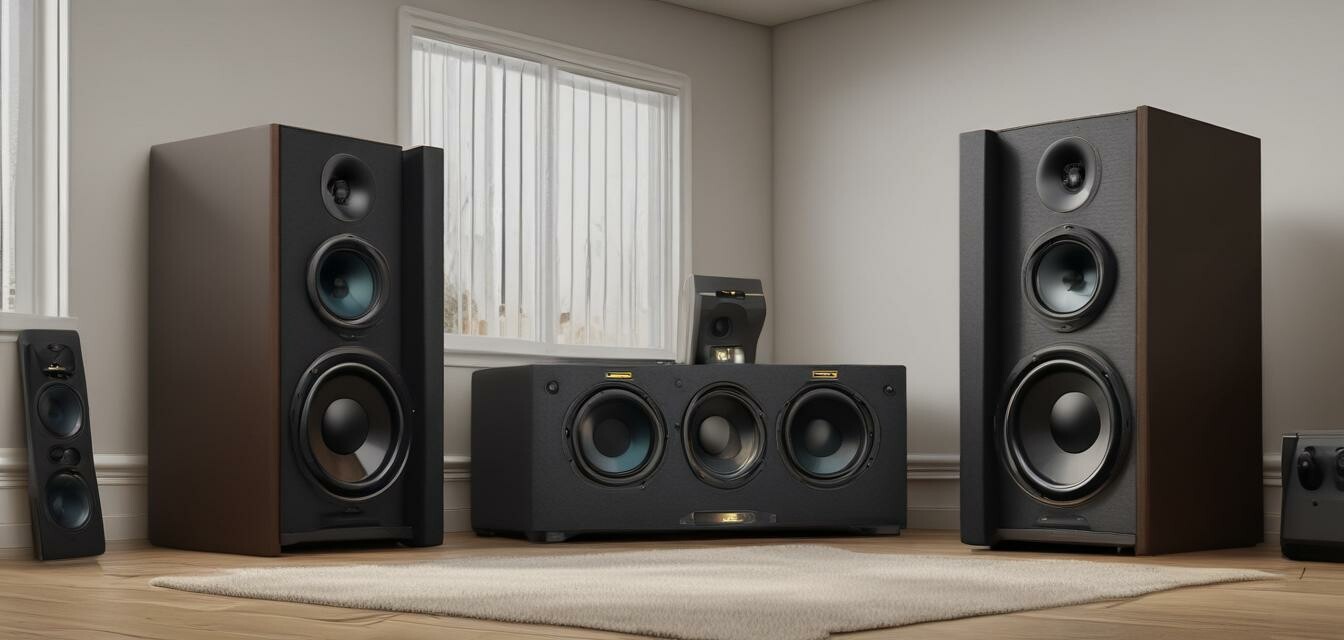
A Beginner's Guide to Choosing Subwoofers
Key Takeaways
- Understand the importance of subwoofers in enhancing audio experience.
- Consider factors like power output, frequency response, and connectivity options.
- Compare different types of subwoofers to find the best fit for your home setup.
- Explore various brands and their top-rated products for better decision-making.
Choosing the right subwoofer for your home audio setup can significantly enhance your listening experience. This guide will help you navigate the often-confusing world of subwoofers by explaining their importance, features to consider, and providing product recommendations. Whether you're setting up a surround sound system or just improving your stereo setup, picking the right subwoofer is essential.
What is a subwoofer?
A subwoofer is a loudspeaker designed specifically to reproduce low-frequency sounds. These sounds are typically generated by the bass instruments and effects in music, movies, and gaming, providing a depth of sound that regular speakers often can't achieve. Adding a subwoofer to your audio setup creates a richer and more immersive experience.
Why are subwoofers important?
Subwoofers serve several essential purposes:
- They handle low-frequency sound reproduction.
- They relieve your main speakers from the strain of delivering bass, resulting in better overall sound quality.
- They enhance the experience of watching movies and playing video games with impactful audio.
Key features to consider
1. Power output
The power output of a subwoofer is measured in watts. The higher the wattage, the louder and more powerful the subwoofer. Consider your room size and how much volume you want:
| Room Size | Recommended Power Output |
|---|---|
| Small (< 150 sq ft) | 50-100 Watts |
| Medium (150-300 sq ft) | 100-200 Watts |
| Large (300+ sq ft) | 200+ Watts |
2. Frequency response
The frequency response indicates the range of low frequencies your subwoofer can reproduce. Generally, look for a subwoofer that can produce sounds in the range of:
- 20 Hz - 200 Hz is common for most subwoofers.
- 20 Hz - 80 Hz is adequate for home theater setups.
3. Connectivity options
Ensure your subwoofer has the necessary connectivity options for your audio system. These can include:
- Line-level RCA inputs
- Speaker-level inputs
- Wireless connectivity (Bluetooth or Wi-Fi)
Types of subwoofers
There are various types of subwoofers that you can choose from based on your needs:
- Passive Subwoofers: Require an external amplifier to operate.
- Active Subwoofers: Come with a built-in amplifier for easy setup.
- In-wall or in-ceiling Subwoofers: Ideal for space-saving and a cleaner look.
- Portable Subwoofers: Great for outdoor use or small gatherings.
Top subwoofer recommendations
Here are two noteworthy subwoofers to consider based on their features and performance:
W-KING Portable Loud Bluetooth Speaker
A powerful 120W waterproof boombox subwoofer for outdoor parties, featuring deep bass and Hi-Fi audio.
Learn MoreTPBEAT Portable Bluetooth Party Speaker
Experience 160W of powerful sound with 15 hours of battery life and a dazzling LED light show.
Learn MoreInstalling your subwoofer
Proper placement of your subwoofer is critical for optimal sound. Here are some tips:
- Try placing the subwoofer in the front of the room, near the main speakers.
- Keep it away from walls to avoid unwanted reflections and distortion.
- Consider a corner placement for a more powerful bass response.
Conclusion
Choosing the right subwoofer can make a world of difference in your home audio experience. By understanding key features such as power output, frequency response, types, and top products, you can make an informed decision that suits your needs and preferences.
Tips for Beginners
- Always listen to a subwoofer before purchasing if possible.
- Read user reviews and guides on different models.
- Pay attention to the warranty and customer support offered by the manufacturer.

